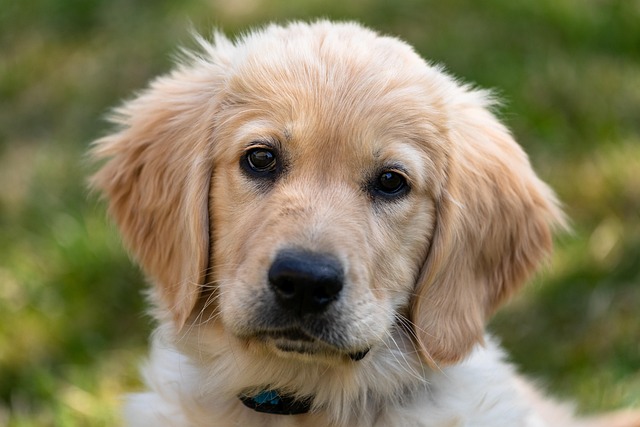
What is glaucoma in a dog?
You might notice your dog squinting more at mealtime or avoiding bright sunlight—these small changes could be early signs of a serious eye condition.
I stood in my friend Lily’s Chicago apartment kitchen last week, watching her panic as she grabbed a half-eaten onion slice off the floor—her 10-month-old Beagle, Buddy, had already licked his lips. “I was making salad and dropped it! I know some veggies are good, but what vegetables can dogs not eat? Did I just hurt him?” Lily asked, reaching for her phone to call the vet. If you’re a new U.S. dog owner who loves sharing snacks (or just keeps veggies on the counter), knowing toxic vegetables isn’t just “pet trivia”—it’s a matter of keeping your pup out of the emergency room.
To understand why some vegetables are dangerous for dogs, let’s break down canine biology. Dogs’ digestive systems and liver functions are very different from humans—substances that are harmless to us can break down into toxins in their bodies. Lily’s vet, Dr. Patel, explained that the biggest culprits contain compounds that damage cells: onions and garlic have sulfides that destroy red blood cells (causing anemia), while raw potatoes have solanine (a poison that attacks the nervous system). Even small amounts add up—Buddy only licked an onion slice, but Dr. Patel said repeated exposure could lead to lethargy or trouble breathing. Scolding a dog for eating dropped veggies (like Lily almost did when Buddy cowered) violates U.S. animal welfare standards; he wasn’t being “naughty”—he follows his nose, and it’s our job to keep dangerous foods out of reach.

Here’s a clear guide to what vegetables can dogs not eat, plus how to keep them safe—using Lily’s lesson with Buddy: First, the “never-feed” list (memorize these). Onions, garlic, leeks, and chives top the list—even cooked ones (like in stir-fries) are toxic. Raw potatoes and potato skins (solanine builds up in green or sprouted spuds) are risky too, as are rhubarb leaves (high in oxalates that hurt kidneys). Lily now keeps these in a locked cabinet (critical for apartment kitchens with curious pups like Buddy). Second, watch for “tricky” veggies (they look safe but aren’t). Tomatoes are fine ripe, but unripe green ones have solanine—Buddy once tried to nibble a green tomato from her windowsill, and she quickly redirected him with a carrot slice (a safe alternative). Third, know the symptoms (act fast). If your dog eats toxic veggies, look for vomiting, diarrhea, pale gums (from anemia), or weakness. Buddy was lucky—no symptoms, but Dr. Patel told Lily to monitor him for 24 hours and bring him in if he lost his appetite. Fourth, offer safe swaps (reward good behavior). Instead of risky veggies, Lily now gives Buddy small pieces of carrot, cucumber, or steamed broccoli as treats—she uses them for training (positive reinforcement for “leave it!” when he sniffs the counter) and he loves them more than onion anyway.
For apartment living, tweak your space to avoid accidents: Store toxic veggies in high cabinets or airtight containers (Buddy once chewed through a paper bag of garlic). Keep a “pet-safe snack drawer” with pre-cut carrots or cucumber—easy to grab for training or when you’re cooking. When walking, carry two essentials: biodegradable poop bags (Chicago fines $200 for leaving messes) and a small container of safe veggies—reward your pup for ignoring weeds or dropped food on the sidewalk . Never skip vet checkups: Dr. Patel updated Buddy’s rabies vaccine (mandatory nationwide) during their visit and gave Lily a printed “toxic food list” to tape on her fridge—vets can’t help if you don’t know what’s dangerous, and early treatment for veggie poisoning saves lives.
Two days later, Lily texted me a photo: Buddy crunching on a carrot stick, his tail wagging. What vegetables can dogs not eat? For Buddy, onions were the scare—but now Lily knows to keep toxic veggies locked up and safe ones handy. For your pup, it’s about being proactive: know the risky list, store food smart, and use safe veggies to bond through training. Your kitchen can be a happy place for both of you—just keep the dangerous veggies out of paws’ reach.

You might notice your dog squinting more at mealtime or avoiding bright sunlight—these small changes could be early signs of a serious eye condition.

Let’s set the scene: It’s a sweltering Phoenix afternoon—105°F outside—and you rushed your 2-year-old Lab mix, Cooper, on a quick walk to “get it over with.”

Let’s get real: You’re in your Miami apartment, watching your 3-year-old Corgi, Loki, struggle to climb the stairs to your second-floor unit.

Many dog owners brush off occasional scratching as just “dog behavior,” but persistent itching often signals something more—like a food allergy.

You might first notice your dog scratching more than usual—chewing at their paws until the fur looks thin, or rubbing their face against the couch nonstop.

Let’s be real: You’re standing in your Chicago apartment, watching your 3-year-old Beagle, Max, huff and puff just to climb onto the couch.